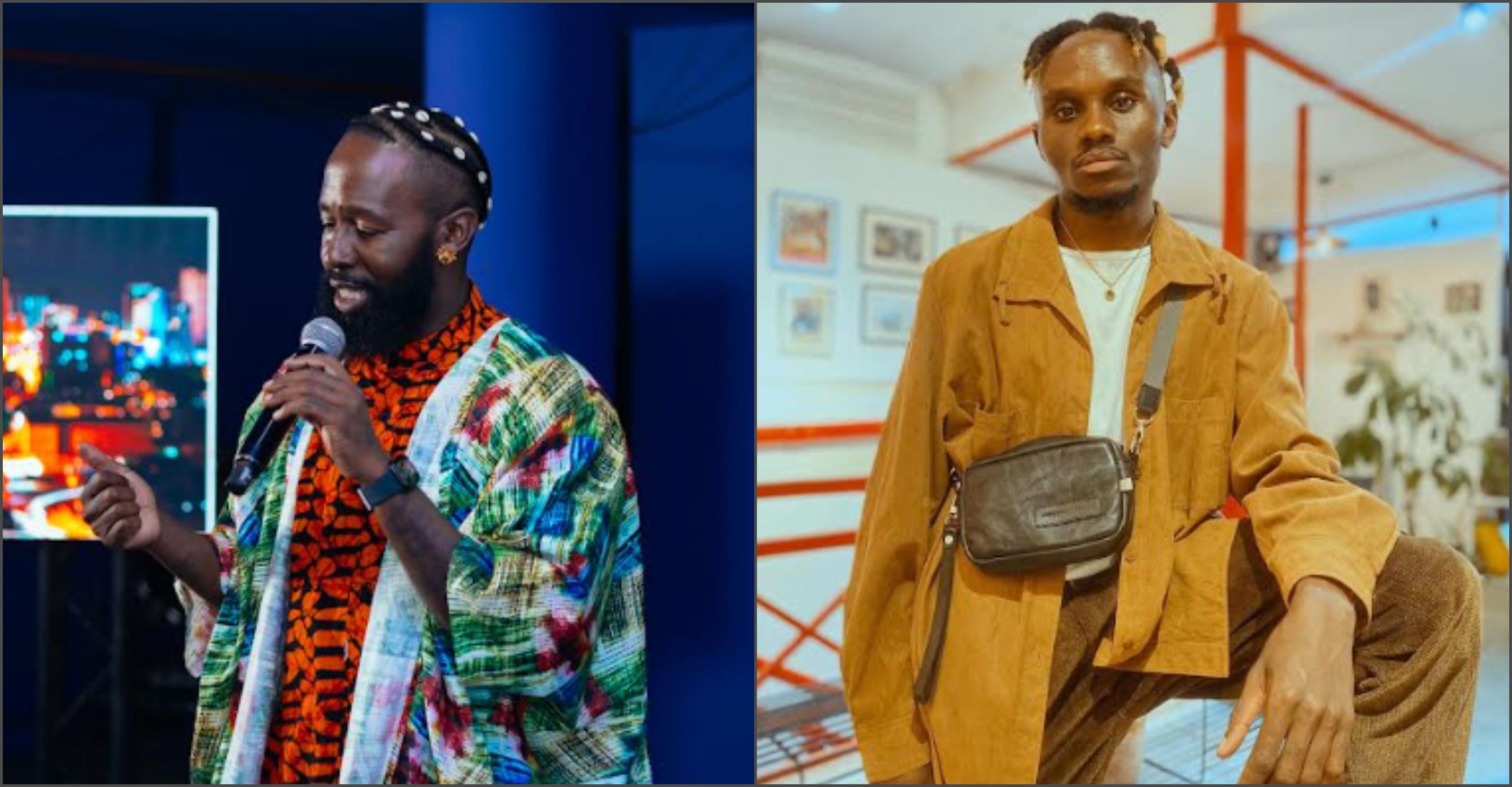Mutua Matheka recently opened his immersive exhibition dubbed ‘Fragments’ at the Junction Mall, which will run until November 10.
The showcase offers a fresh perspective of Nairobi through photography, kaleidoscopic imagery, and live sounds captured in the city.
In collaboration with filmmaker Kaesa Kelvin and music producer Blinky Bill, Matheka uses a decade’s worth of photography to create this experience.
KBC Digital sat down with Mutua Matheka and Kaesa Kelvin to talk about this one-of-a-kind project.

How did you come up with the name Fragments?
I believe cities and people have multiple dimensions. We each see places differently based on our upbringing, background, and experiences.
Fragments reflects these varied perspectives – there isn’t just one way to see Nairobi. Even as photographers, how we capture these places is based on our vision.
I challenged myself to keep changing my perspective and accept different ways of seeing this city.
So ideally, that’s where Fragments came from. I’ve tried to capture Nairobi differently since 2010 when I looked at it from the KICC rooftop.
I saw something more than the dust down here, more than just the harassment on the ground – it felt bigger and more beautiful, so I started shooting it that way.
This inspired me to capture cities from many different angles, that is what Fragments is.
How has Nairobi changed over the years?
When I started, it was easy to shoot in the city but after incidents like the Garissa and Westgate attacks, police grew suspicious of photographers.
The attitude towards photography changed. I was arrested four times with the last arrest being in 2017.
However, things improved a little recently after Sakaja became governor. Now young people are out in the streets shooting freely, which wasn’t possible before. Architecturally, the city has also evolved.
But, one change I dislike is the switch from warm streetlights to stark white LEDs. While bright lighting helps, aesthetics matter too – warm LEDs could provide both illumination and beauty. Unfortunately, our government often lacks imagination, and Nairobi now feels drab and colourless.

Do you think the people coming to the exhibition will be able to tell that?
Well, I don’t know if they will get that but I hope they come away seeing the city and the world differently, hopefully their minds will be altered a little.
The immersive box offers an experience beyond what people expect. My goal is for them to stop viewing things at the surface level and start appreciating deeper layers.
Why photography?
Photography is a unique way of seeing the world. It lets me create and express myself.
I am a trained architect because I’ve always loved creating from scratch, but photography became my way to satisfy that creative urge.
It’s something I’ve done for 14 years now, longer than anything else I have done.
What is your photography style?
Genre-wise it is architecture, travel, and conceptual photography. Travel photography feeds my curiosity – the part of me that wants to see new things, architecture photography satisfies the part of me that loves design, and conceptual photography lets me explore abstract and strange things and turn them into creative ideas.

Is there such a thing as bad photography?
(Laughing) Yes, I think both bad photos and bad art exist, despite art being subjective. I think objectively there is bad art.
For me, the worst kind of art is unintentional or hateful art. However, even if I don’t personally like some art, it doesn’t mean it’s bad – art doesn’t have to be likeable to be good.
There is good art that I don’t like and there is art that is subjectively horrible that I like.
What inspired the set-up of this exhibition?
Honestly, this project felt like an idea that just needed to come out. For a few years now, I wanted to go beyond displaying photos on walls and offer a multi-sensory experience instead.
Of course, no disrespect to that style, I still appreciate such exhibitions, but for me sight, sound, and eventually smell were part of my vision.
I wanted visitors to step into Fragments and feel transported into a new world, beyond the Nairobi they think they know.
How did you create the immersive environment?
We painted the basement blue to create an otherworldly vibe. You come here and you are not in a parking lot anymore, you are at Fragments.
The sounds are intentional, we set up the lights uniquely, and even the sounds of the city outside are very specific.
When I first came here I heard the city noise from outside and realized it fit perfectly with our theme. Blinky Bill incorporated Nairobi’s recorded sounds into the film, enhancing the experience. So everything is very intentional.
Do you plan to do other projects like this?
Yes, I’ve already started a project called Unscrambling Africa and the goal is to capture all African capital cities.
I have covered eight countries and ten cities in southern Africa so far. I don’t know which ones will be next but I plan to go to all the African capitals and capture them uniquely.
Any final thoughts?
I am really grateful to everyone who made this possible, I couldn’t have done this on my own.
That includes Glenfiddich the main sponsor, Expose for the Screen set-up, and even Junction for the venue.

Kaesa Kelvin, an artist and photographer, speaks about his experience working with Mutua Matheka.
What was your experience working on this project?
It was an honour to collaborate with Mutua, who has documented Nairobi for over a decade.
His photography offers a new perspective beyond what we see at street level. When he shared his vision for the immersive booth, it was both mind-blowing and eye-opening.
He is introducing a new perspective that a lot of people don’t get to see on a daily. I thought he already had a unique way of seeing the city, but adding layers like sound and kaleidoscopic visuals created an even richer experience.
Collaborating with Blinky Bill to capture Nairobi’s sounds like touts at bus stops, arguments on the streets, and matatu drivers interacting, brought that raw, uniquely Nairobi essence into the space.
We wanted people to experience the city in a more intimate and elevated way.
How did you get involved in the project?
Mutua and I have known each other through creative circles, and I’ve admired his work for a long time.
We’ve crossed paths at events, followed each other online, and shared conversations about our art. So when he approached me with this idea, it felt like fate. I think it was one of those things that was meant to happen.
What new insights have you gained about Nairobi through this experience?
I have always thought Nairobi is a beautiful city. It’s probably because I grew up seeing it through people like Mutua who capture it so well.
This project highlighted how development shapes the city. For instance, Kenyatta Avenue now has bright LED lights instead of the warm lights it once had, and streets like Moi Avenue had a lot more Jacaranda trees.
Most people would not notice this but someone like Mutua who has been documenting the city would notice.
While change is inevitable, it raises questions about preserving the essence of what makes a city beautiful.
Cities are meant to evolve but is there a pattern or a system to it that could maintain what people love about the city.
What do you hope people take home from this experience?
I hope visitors leave with a new appreciation for Nairobi. People often think of cities like New York or Paris as beautiful, but it’s important for us to see our city the same way.
We need to travel around and see more of this beautiful country. We need to notice the small, everyday details – the mama mboga chatting away or the rhythms of daily life. I hope attendees will explore more of their city and country with fresh eyes.
Does this art form tell Nairobi’s story effectively?
Yes! As the saying goes, ‘A picture is worth a thousand words’. But Mutua didn’t stop at images, he layered sound and music to deepen the storytelling.
He has created a unique experience by bringing in the work of people like Blinky Bill and Makasi who captured the city sounds authentically.
So you are not just looking at an image of the Kencom bus stop, you can also hear the touts in the background saying things like ‘Ngong road 30 bob’ so yeah, this time I’ll give it to the artistes, they do a better job of telling the story of Nairobi.
What was the creative process like?
It was intense but rewarding. Mutua sold us the vision of what he wanted but none of us knew exactly how it would look until the installation came together.
We brainstormed, refined, and adjusted along the way. That’s the nature of creative work, you explore, trust the process, and keep hoping that the final product conveys the intended message.
We are happy with what we have created and hope that the visitors see the vision we had in mind.
Is this your first project like this?
Yes, this is my first time working on such an exhibition. It’s new ground for me but I’ve always wondered how people consume art so, for me, it was important to figure out how people would take it in.
How long did it take to create this?
Mutua reached out about two months ago with the concept. From there, it was all about refining the idea, testing visuals, perfecting the sounds, and ensuring the installation functioned smoothly.
We also had to find the right partners and funders to make it happen. On that note, I hope to see more support for such artistic ventures.
There are many artists with great stories to tell, and with more accessible funding, we could see even more creatives come up.





